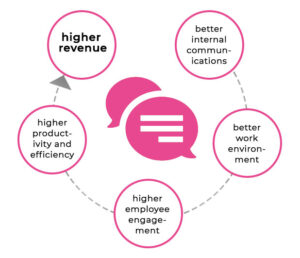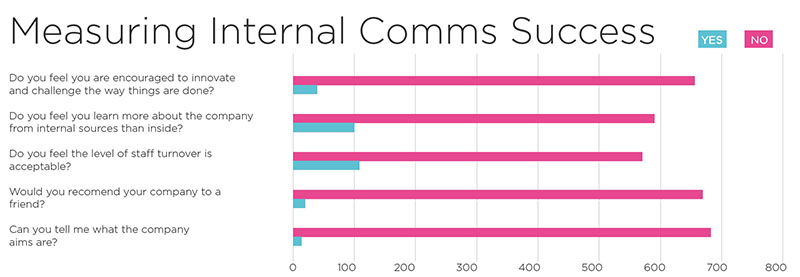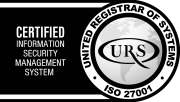Internal Communication Benefits A wave of millennials are now entering management positions, and Gen Z are — continue reading
Internal communications (or known as IC) in the workplace is set to grow in relevance. And believe it or not, an effective internal communications strategy can be built in 6 steps and will help keep your community engaged. How much time at work do you spend on Slack, Skype, Gmail and other communication tools? Are you communicating effectively? That’s the question a lot of organizations have begun to ask themselves.
Internal Communication Benefits
A wave of millennials are now entering management positions, and Gen Z are right behind them. Each successive generation has demanded more transparency, feedback, and collaboration with their employers. In response, internal communication strategies are becoming more sophisticated and vital. Directing your focus inward can do wonders since your employees are, in essence, your most dedicated brand champions.
Internal communication has many definitions, ranging from various forms of employee engagement to two-way channels forms of employee engagement to two-way channels. However, in its purest form, internal communication is defined as the way organizations and employees share information and communicate with each other. This definition does not focus on individuals since it’s everyone’s role to communicate with each other.
We’ve all been there; our noses buried so deep in our laptops that sometimes we forget to look up and talk to the person next to us. And some wonder why they would need to. Effective internal communication has various benefits, for both the organization and the employees:
- Employee engagement. It all comes down to this popular, although vague, concept (with over 11 million hits on google): engagement. Engaging your workforce – aka including them in decisions, asking for opinions, sharing knowledge – makes them feel valued. It was found that high levels of engagement boosts productivity, improves morale, and creates a better environment at work.
- Cohesive company culture. Through clear communication, employees can internalize organizational values and provide their feedback to the company. Thereby, creating a cohesive and open culture.
- Define goals. When strategies and goals are defined clearly, employees can contribute and align their personal goals with the organization. This helps them know how they and the company are working together towards a final objective.
- Customer satisfaction. Consumers expect consistent communication and that organizations deliver brand promises. This is accomplished most effectively through internal communications with frontline employees. A survey by Gartner found that 89% of companies in 2017 competed mostly on customer experiences, compared to 36% in 2013.
- Crisis handling. Internal communications are the key to handling any organizational crisis. The way your employees and other stakeholders view a current crisis has a significant impact on the development of the incident. Moreover, internal communication supports crisis management by improving teamwork.
- Enhance transparency. Word-of-mouth and informal communication in a workplace may result in the misinterpretation of information. That’s why it’s essential to have excellent internal communication, which leads to improved relationships, slows down rumors, and distribute instructions.
- Increase productivity. All the benefits above point to increased productivity in the workplace. Employees that believe their work has an impact and can identify with an organization are both committed and productive.

Organizations have around the world have already recognized the importance of effective communication in the workplace. In fact, in their 2016 survey, Ragan Communications found that budgets for internal communications are the ones most like to grow!
It impacts your customers
Good internal communications have a spillover effect onto the customers of an organization. Mostly, the ROI is clear: happy employees will provide better customer service. They inspire loyalty among other employees and customers alike. On top that, they are much more likely to stay with a company, reducing turnover costs and irregularities experienced by customers. Forbes found that the 100 best companies to work for had a five times higher growth rate than other companies around the U.S.
We thought about how we could make our core values into the platform on which we would build a company, and the culture became the platform. Making employees happy and making customers happy and making our partners happy became our mantra. Alfred Lin, CFO Zappos
Companies like Zappos have made communication a focal point of their strategy, aligning employee experience with customer success.
Poor Communication
You might be thinking that you would rather spend this time and effort on other areas of your business, rather than internal communications. However, the effect of poor communication on a workplace can be detrimental.
Communication is a necessity in life. Especially in the current workplace, where technology, remote working, and teamwork are becoming a norm. When the communication is flawed, so is the business. Here are a few key areas that would suffer:
Employee Morale. There are no statistics necessary to explain that lack of or lousy communication is frustrating: deadlines are missed, and tasks are misunderstood. This in turns leads to decreased enthusiasm, motivation, and engagement. A lack of interest can lead to a higher turnover rate. In fact, it was found that 47% of employees in the U.S. will be looking for a different job in the coming year. Hence, it’s important for both employees and the company to improve communications.
Less cross-collaboration. The ability to collaborate with co-workers is becoming more difficult due to flexible working hours and working location. And collaboration can affect efficiency and even loyalty, according to a report by The Economist Intelligence Unit. Every company should invest in a tool that’s both easy to use and easy to access so that communication can flow freely.
Suppressed innovation. There’s a magical bonus when communication can flow, and collaboration can occur with ease: innovation. An ideation process takes more than one person usually, and it requires a place for employees to share ideas, keep track of progress, and to develop a plan into a reality.
Effective Internal Communications
Measuring and optimizing communications from an external perspective is standard practice. However, it’s just as important to both strategize and measure how successful your internal communications are. What characteristics does excellent internal communication have? Here’s a list we compiled:
- Clear language (free of jargon)
- Open and objective communication
- A two-way dialogue
- Regular communication
- Understanding and taking your audience into consideration
- Using nonverbal behavior that matches your verbal communication
- An accessible medium for communication
Coca-Cola has actually implemented a brand advocate program called Coca-Cola Ambassador that prepares and coaches all their employees for better communication both externally and internally.
Understanding the characteristics of good internal communications and why it’s essential is the first step towards creating a unified workforce, but sometimes that’s not enough. The best results are achieved by creating an internal communications strategy.
IC Strategy in 6 Steps
Creating a well-executed internal communications strategy may seem a little daunting, but in reality, it only takes a few steps to enhance the communications within an organization. Here’s a 6 step approach that will help:
1. Assess your current strategy
It’s very likely that most organizations already have some sort of internal communications strategy in place. And even if you don’t have, take some time to evaluate how and where your organization reaches out to employees, such as the points of contact and engagement (events, tools, frequency, etc.). The internal research will help set the stage for the next steps of the strategy, including what part of your internal communication needs the most focus. Here are some questions to ask at this stage:
- How is the current plan performing?
- What are the most significant weaknesses?
- Who’s involved?
- What tools are you using?
During this stage, it might even be useful to send out a survey to evaluate how happy employees are and how they think the internal communications could improve.

2. Planning your new strategy
Just like most other business processes, a good strategy needs clearly defined goals, timeline, and metrics. Your internal research will have shed some light on which areas need improvement. For example, are there issues in workflow communication? Is the relationship between management and employees strong? Are employees actively using the intranet? Above all, keep the characteristics of a good communication strategy in mind!
First, define your goals and actionable objectives. The whole team needs to have a clear vision of what needs to be improved and how.
Secondly, lay out a timeline. What’s the realistic amount of time it will take for the new process to be implemented?
Finally, define your key metrics. Some suggestions for metrics are social shares of company updates, employee engagement metrics (how often do they read internal content, share company content on social media, etc.), amount of employee referrals, intranet usage, and the number of project management issues.
3. Define your audience
Once you have defined your strategy, it’s time to understand who you are targeting and involving. You need to adapt the content of your strategy to the audience. Also, most think that great internal communications strategies should deliver messages to everyone. However, it’s just as important to segment the audience and provide the right message to the right employees.
For example, your sales team might not need to know every marketing update, and therefore, it would be wise to have two different areas to deliver messages to these teams.
4. Approval from all teams
Planning a successful internal communications strategy is both daunting and not possible without including other teams of the organization. Here are some questions to ask about how the rest of the company can contribute to shaping a successful strategy:
- How can each team contribute to streamlining the communication process?
- Which team is responsible for which part of the strategy?
- Is every team happy with the current strategy?
- How does each team feel about the metrics that measure your success?
Remember, internal communication is a two-way process that should include everyone in the organization.
5. Choose and define tools
Many different channels are used to push internal content, ranging from social media channels, online communities, newsletters, email, briefings or even IM platforms such as Slack. Each tool has advantages and disadvantages regarding encouraging employee engagement and interest.
The best approach to choosing your tools is to list all the tools and determine how and why the company uses them. Are there too many tools? Is there one to disseminate plans? How about meaningful two-way communication?
6. Evaluation
The metrics that you defined in phase two should be used to track progress, and you optimize your strategy. Has engagement increased? Have the project management issues you defined been solved? Set up a monthly evaluation of your strategy and communicate regularly with stakeholders. For example, reflect on internal communications during every company meeting. Some questions you can ask are:
- Does communication need to be increased?
- How well are we communicating within the organization?
- What prevents you from better communications?
- What can we improve on the most?
In the end, your internal communication strategy should provide employees with the information they need to succeed both personally and professionally.
Ready to take your community experience to the next level? Download the guide below:


